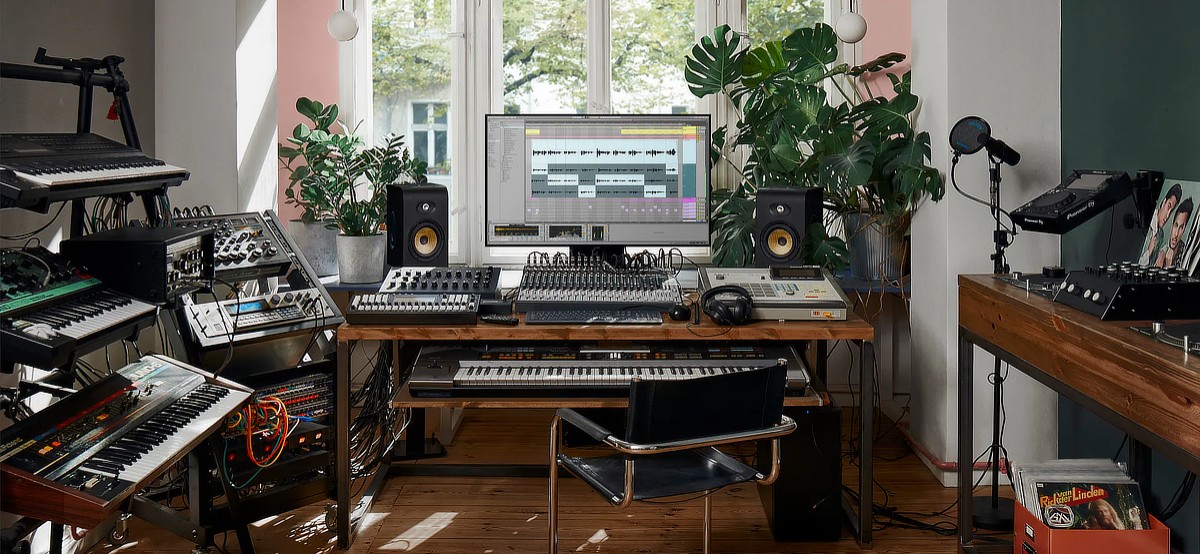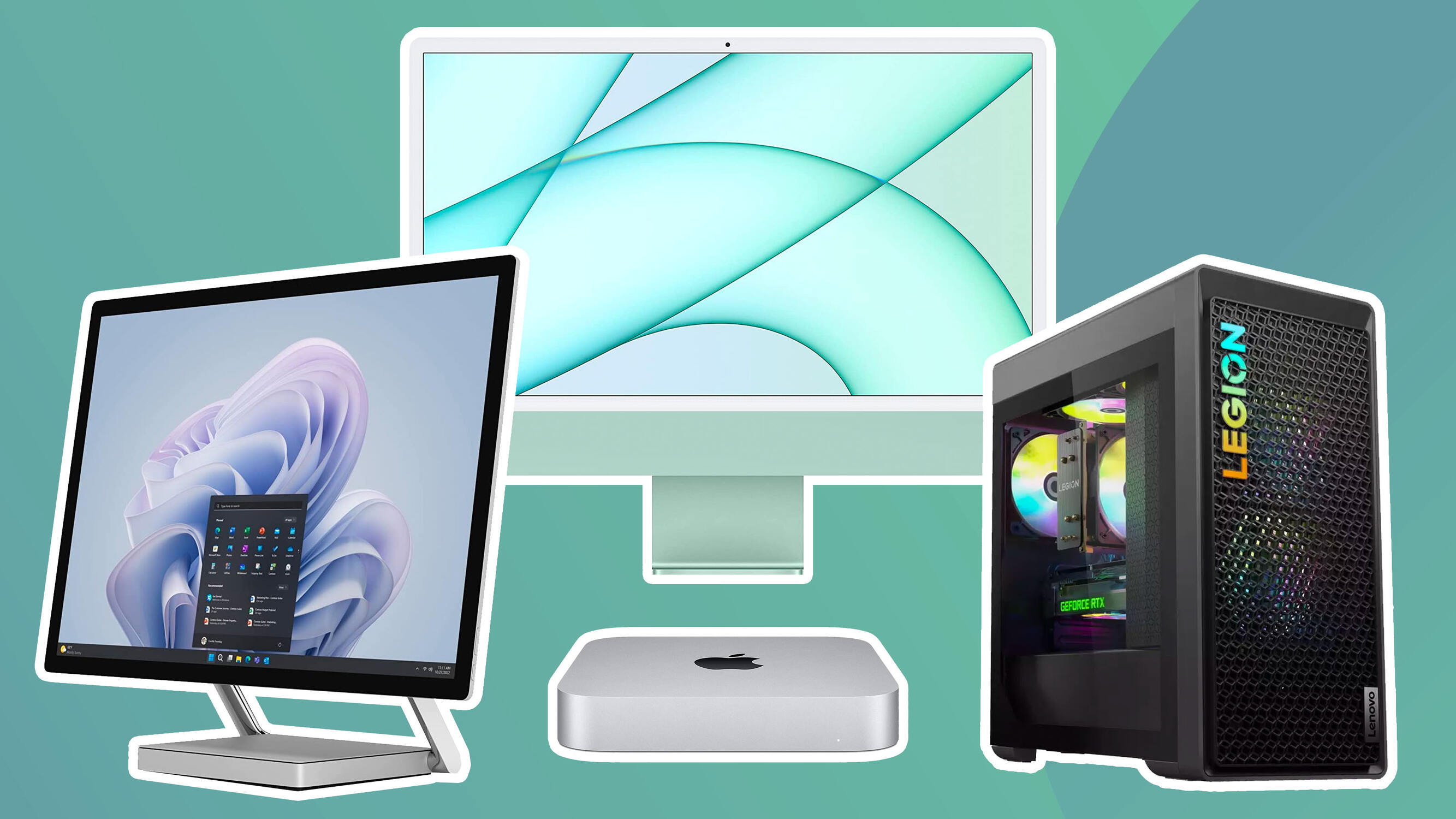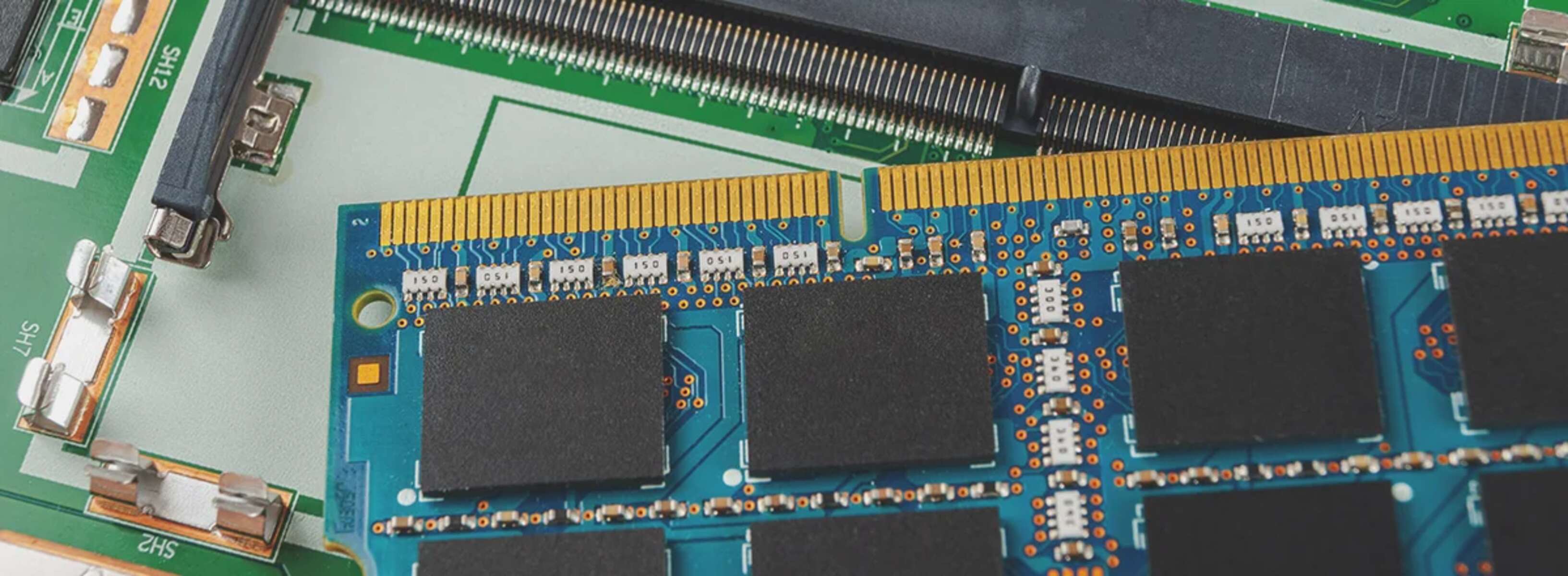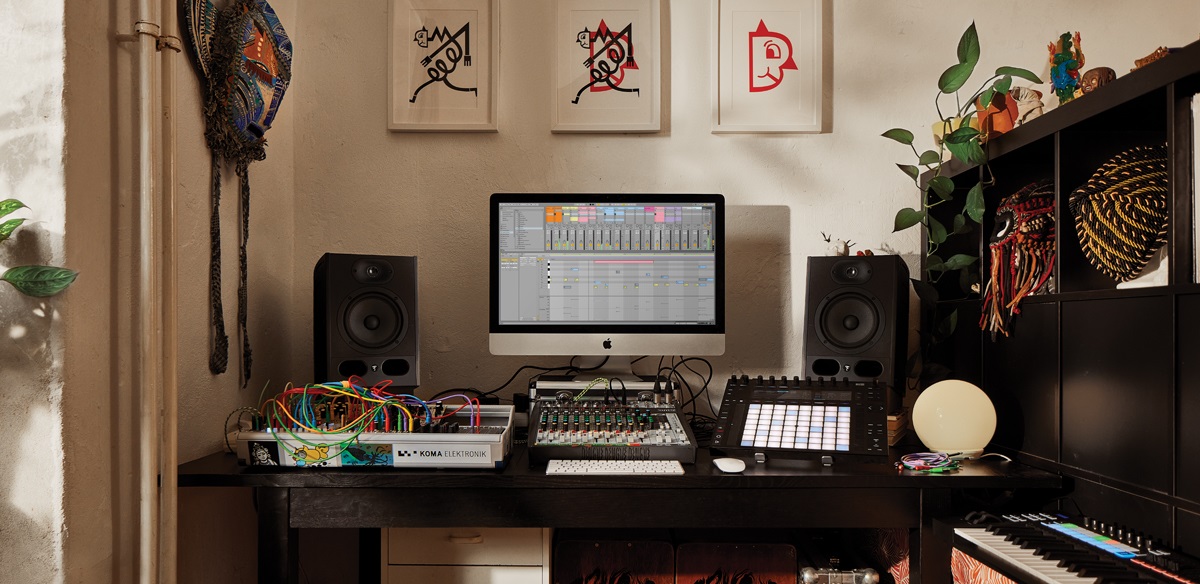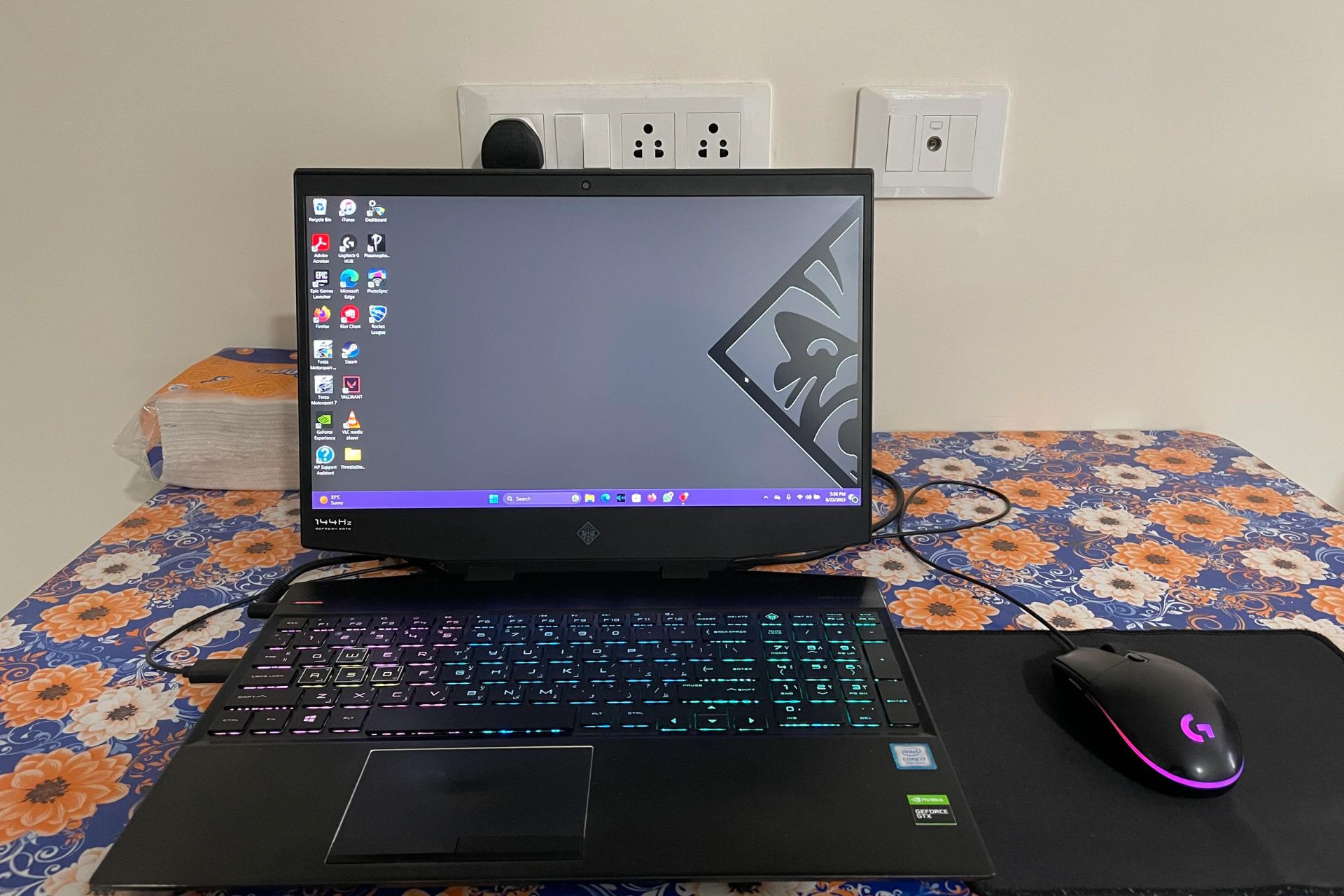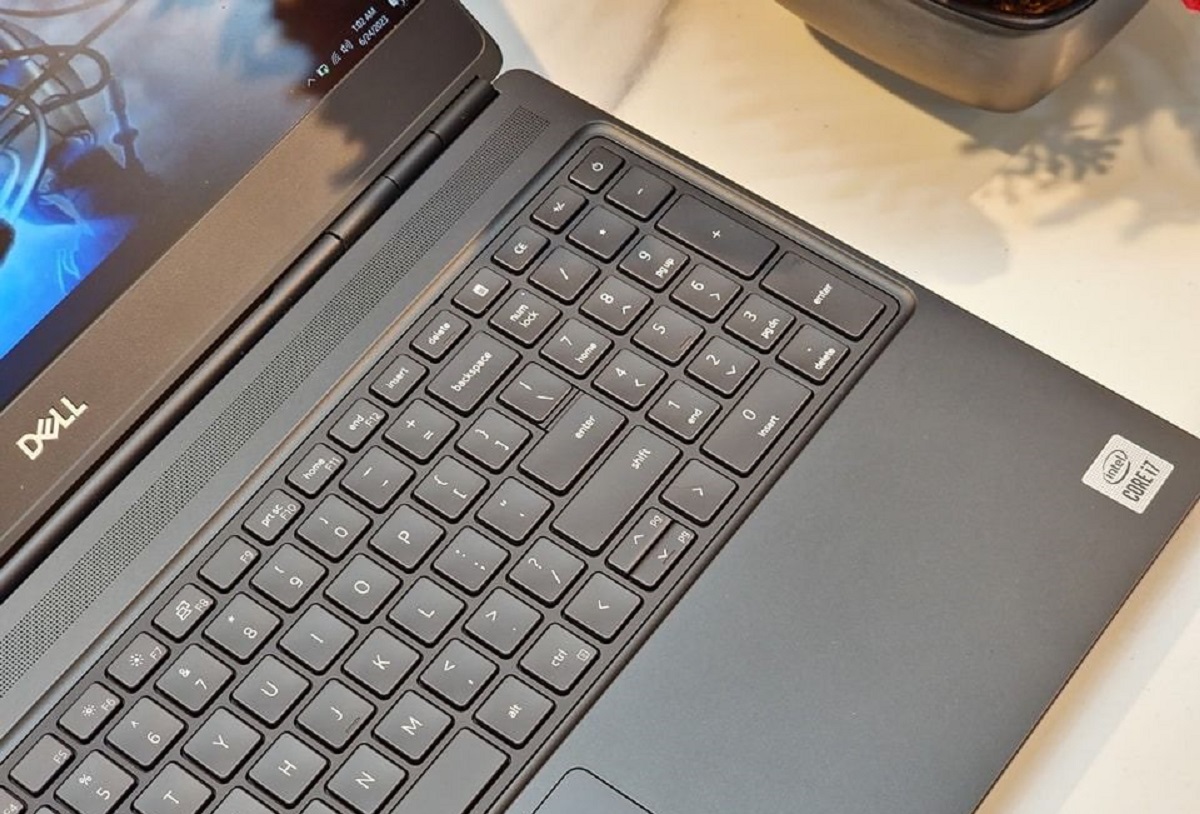Introduction
A digital audio workstation (DAW) is a powerful tool used by musicians, producers, and audio engineers to create, record, edit, and mix music and other audio projects. These sophisticated software applications require robust hardware to ensure smooth and efficient performance. One of the key components that greatly impacts the performance of a DAW is RAM (Random Access Memory).
RAM is a temporary storage space where the DAW software loads and processes data in real-time while you work on your projects. It plays a crucial role in the speed and responsiveness of your DAW, as it determines how much data can be accessed quickly by the CPU.
The amount of RAM your DAW requires depends on several factors, including the complexity of your projects, the number of tracks and plugins you use, and the type of audio processing you perform. Insufficient RAM can lead to performance issues, such as audio dropouts, sluggishness, and crashes. That’s why it’s important to determine the right amount of RAM needed for your specific DAW usage.
In this article, we will explore the factors that affect RAM usage in a DAW, discuss the minimum RAM requirements for different types of DAWs, and provide recommendations for optimal RAM configuration. We will also cover how to check your current RAM and upgrade it if necessary, as well as share some tips for optimizing RAM usage in a DAW to ensure smooth workflow and uninterrupted creativity.
So, let’s dive in and understand how much RAM your digital audio workstation truly needs for optimal performance.
Understanding RAM
RAM, or Random Access Memory, is a critical component of your computer that provides temporary storage for data that your computer’s CPU (Central Processing Unit) needs to access quickly. Unlike your computer’s hard drive which stores data permanently, RAM is volatile and loses its data when the computer is turned off or restarted.
Think of RAM as the workspace where your computer performs its tasks. It’s like a desk where you can lay out your materials and access them swiftly while working. In the context of a digital audio workstation (DAW), RAM plays a crucial role in storing and processing audio data in real-time.
When you open your DAW and load a project, the software utilizes your computer’s RAM to keep all the necessary audio files, plugins, and other data readily available for processing. This allows your DAW to respond quickly to your actions, such as changes in settings, adding or removing plugins, or applying real-time effects.
The more RAM your computer has, the more data it can store in its workspace, resulting in faster and more efficient performance. This is why having an adequate amount of RAM is crucial when working with resource-intensive software like DAWs.
RAM is often measured in gigabytes (GB), with higher numbers equating to larger storage capacity. DAWs typically require a significant amount of RAM due to the nature of audio processing, which involves handling multiple tracks, complex effects, virtual instruments, and real-time automation.
It’s important to note that RAM is different from your computer’s storage capacity, such as the hard drive or solid-state drive (SSD). Storage devices are used to store files and programs for long-term use, while RAM is used for temporary data storage during active usage.
Now that we have a basic understanding of what RAM is and its role in a DAW, let’s explore the factors that influence RAM usage in more detail.
Factors that affect RAM usage in a Digital Audio Workstation
Several factors can contribute to the amount of RAM a digital audio workstation (DAW) requires. Understanding these factors will help you determine the appropriate amount of RAM for your specific needs. Let’s explore them:
- Project Complexity: The complexity of your audio projects significantly impacts RAM usage. Larger projects with a high number of tracks, virtual instruments, and audio effects require more RAM to handle the increased data processing load. Each track, plugin, and effect consumes a certain amount of RAM, so the more complex your project, the more RAM you’ll need.
- Sample Rate and Bit Depth: The sample rate and bit depth of your audio files affect the RAM requirements. Higher sample rates and bit depths result in larger file sizes, consuming more RAM for processing. If you work primarily with high-resolution audio files, you’ll need more RAM to accommodate the increased data load.
- Number of Plugins: Plugins, such as virtual instruments and audio effects, can be resource-intensive and require RAM to operate smoothly. Each plugin instance takes up a portion of your RAM, so the more plugins you use in your project, the more RAM you’ll need. Complex plugins that utilize advanced synthesis and processing algorithms can also place a heavier demand on RAM.
- Real-Time Processing: Real-time audio processing, which includes tasks like live recording, MIDI input, automation, and real-time effects, requires instant access to data. As a result, your DAW needs sufficient RAM to store and process this data without any latency or dropouts. Inadequate RAM may cause glitches and hinder real-time processing performance.
- Operating System and Background Processes: The operating system and other background processes running on your computer also consume a portion of the available RAM. It’s crucial to consider these system requirements alongside your DAW’s RAM needs to ensure optimal performance. Adequate RAM should be allocated for both your DAW and the operating system.
These factors interact with each other and collectively determine the RAM requirements for your DAW. It’s essential to assess your specific workflow and usage patterns to determine the right amount of RAM needed for your projects.
Minimum RAM requirements for different types of Digital Audio Workstations
The minimum RAM requirements for digital audio workstations (DAWs) can vary based on the specific software and its features. While these minimum requirements are typically provided by the software developers, it’s important to note that they might not account for resource-intensive tasks or larger projects. Here are some general guidelines for minimum RAM requirements in different types of DAWs:
- Entry-Level DAWs: Entry-level DAWs, designed for beginners or those on a tight budget, generally have lower RAM requirements. These DAWs often have limited features and are suitable for small projects. For such DAWs, a minimum of 4GB to 8GB of RAM is typically sufficient.
- Mid-Level DAWs: Mid-level DAWs, which offer more advanced features and functionality, generally require more RAM to handle medium-sized projects. For these DAWs, a minimum of 8GB to 16GB of RAM is recommended. This will provide sufficient headroom for multiple tracks, plugins, and effects.
- Professional DAWs: Professional-grade DAWs, used by audio engineers, producers, and professional musicians, require a significant amount of RAM to handle complex and large-scale projects. These DAWs often offer extensive features, in-depth audio processing, and support for high-resolution audio files. A minimum of 16GB to 32GB of RAM is typically recommended for professional DAWs.
- Specialized DAWs: Some DAWs cater to specific niches, such as film scoring, post-production, or electronic music production. These specialized DAWs may have specific RAM requirements due to the unique demands of their respective fields. It’s important to review the software documentation or consult with experts to determine the minimum RAM requirements for these specialized DAWs.
Keep in mind that these are general guidelines, and the actual RAM requirement for your specific usage may vary. It’s always a good idea to check the official documentation or website of your chosen DAW for the most accurate and up-to-date information regarding minimum RAM requirements.
Remember that while meeting the minimum RAM requirements will ensure that your DAW can run, it may not provide the best performance or room for more demanding projects. If you frequently work on larger projects or use resource-intensive plugins and effects, it’s advisable to consider higher RAM configurations for a smoother and more efficient workflow.
Recommended RAM for optimal performance
While meeting the minimum RAM requirements for your digital audio workstation (DAW) is essential to ensure it runs, having more RAM than the minimum can greatly enhance the performance and responsiveness of your DAW. Here are some recommended RAM configurations for optimal performance:
- Entry-Level and Mid-Level DAWs: For entry-level and mid-level DAWs, it is recommended to have a minimum of 8GB to 16GB of RAM. This configuration provides ample room for handling multiple tracks, plugins, and effects, allowing for smoother playback and editing.
- Professional DAWs: Professional-grade DAWs, which handle complex and large-scale projects, benefit from higher RAM configurations. It is recommended to have a minimum of 16GB to 32GB of RAM. This allows for seamless handling of large audio files, resource-intensive plugins, and extensive audio processing.
- Specialized DAWs: Specialized DAWs, such as those used for film scoring or post-production, often require even higher RAM configurations due to the unique demands of these fields. It is advisable to have a minimum of 32GB to 64GB of RAM for optimal performance and handling of the large amounts of data involved in these workflows.
Having more RAM than the minimum requirements not only allows your DAW to handle larger projects and more demanding tasks, but it also provides headroom for future growth and expansion. As technology advances and plugins become more complex, having a larger RAM capacity ensures that your DAW remains capable of handling the evolving demands of the industry.
It’s worth mentioning that the RAM requirements can vary depending on the specific audio projects you work on. If you frequently work with high-resolution audio files, utilize numerous virtual instruments, or rely heavily on complex effects and processing, it is advisable to consider higher RAM configurations to ensure uninterrupted workflow and optimal performance.
It’s important to consult your DAW’s official documentation or website for specific recommendations regarding RAM configurations. They can provide valuable insights into the optimal RAM requirements based on the software’s capabilities and features.
Remember, the more RAM your DAW has, the more efficiently it can manage and process data, resulting in a smoother and more enjoyable music production experience.
How to check and upgrade your RAM
Checking your current RAM configuration and upgrading it if necessary is a straightforward process. Follow these steps to check and upgrade your RAM:
- Check your current RAM: On a Windows computer, press the Windows key + R to open the Run dialog box. Type “msinfo32” and press Enter. This opens the System Information window where you can find details about your installed RAM, including the total amount of RAM and the number of slots used. On a Mac, click on the Apple menu, select “About This Mac,” and then click on the “Memory” tab for information about your RAM configuration.
- Check the maximum supported RAM: Look up the documentation or the official website of your computer or motherboard manufacturer to find out the maximum amount of RAM your system supports. This will help you determine the maximum capacity you can upgrade to.
- Choose the right RAM: Ensure that you select the correct type and speed of RAM that is compatible with your computer or motherboard. DDR4 is the current standard, but older systems may require DDR3 or other types. Also, check the speed specification (e.g., MHz) of your existing RAM and try to match it when upgrading.
- Prepare for the upgrade: Power off your computer and unplug it from any power source. Also, make sure you are working in a static-free environment to prevent any damage to your hardware.
- Install the new RAM: Open up your computer’s casing or access panel to locate the RAM slots. If slots are available, carefully insert the new RAM modules, ensuring they are properly aligned with the notches on the slots. Apply gentle pressure until the RAM clicks into place. Be sure to follow any specific instructions provided by your computer or motherboard manufacturer.
- Power on and verify: Once the new RAM is installed, close up your computer, reconnect the power, and power it back on. Check the system information again to verify that the new RAM is recognized and properly installed.
Remember to handle the RAM modules with care, and if you are unsure about the installation process, consult a professional or refer to the manufacturer’s documentation for detailed instructions.
Upgrading your RAM can significantly improve the performance of your digital audio workstation, allowing for smoother playback, faster rendering times, and overall improved workflow for music production.
Tips for optimizing RAM usage in a Digital Audio Workstation
Efficiently managing RAM utilization in a digital audio workstation (DAW) is crucial for smooth performance and enhanced productivity. Here are some tips to help you optimize RAM usage in your DAW:
- Close unnecessary applications: Close any non-essential applications and processes running in the background to free up RAM for your DAW. This includes web browsers, email clients, and other resource-intensive programs that are not needed for your current music production session.
- Disable unnecessary plugins and effects: If you have plugins or effects that are not currently in use, consider disabling them to reduce RAM usage. This helps lighten the load on your system’s resources and improves the efficiency of your DAW.
- Use freeze or bounce features: Utilize the freeze or bounce functionality available in your DAW to temporarily render tracks or sections of your project. This allows you to free up the CPU and RAM resources by converting the tracks into audio files, which can then be easily played back without the need for real-time processing.
- Optimize audio file management: When working with multiple audio files, consider using file formats with lower compression levels or convert them to lower quality formats if the audio fidelity is not crucial for your current project. This can help reduce the file size and the RAM required to load and process the audio files.
- Use RAM-saving techniques for virtual instruments: Some virtual instruments offer options to reduce RAM usage by streaming the samples from the hard drive instead of keeping them all in RAM. Utilize these streaming options for large sample libraries to conserve RAM resources.
- Adjust buffer settings: Modify the buffer settings in your DAW to strike a balance between low latency and efficient RAM usage. Lower buffer sizes result in lower latency but require more RAM, while higher buffer sizes increase latency but reduce the demand on RAM. Experiment with different buffer settings to find the optimal configuration for your workflow.
- Regularly save and backup your project: Regularly saving and backing up your project ensures that you don’t lose your progress in case of any unexpected issues or crashes. This also helps free up RAM as your DAW doesn’t need to keep a large number of unsaved changes in its memory.
- Keep your system and DAW up to date: Regularly update your operating system, hardware drivers, and DAW software to ensure you’re benefiting from the latest optimizations and bug fixes. These updates often include performance improvements that can help optimize RAM usage.
Implementing these tips will help you optimize RAM usage in your DAW, allowing for smoother playback, faster rendering, and an overall more efficient music production workflow. Experiment with different techniques and settings to find the combination that works best for your specific needs and hardware configuration.
Conclusion
Understanding the importance of RAM in a digital audio workstation (DAW) is crucial for ensuring optimal performance and productivity. RAM plays a critical role in storing and processing audio data in real-time, allowing for seamless playback, efficient audio editing, and the use of resource-intensive plugins and effects.
In this article, we explored various aspects of RAM in a DAW, including its function, factors that affect RAM usage, minimum requirements for different types of DAWs, recommended RAM configurations for optimal performance, and tips for optimizing RAM usage.
We learned that factors such as project complexity, sample rate, number of plugins, and real-time processing impact the amount of RAM required. Additionally, we discussed the minimum RAM requirements for entry-level, mid-level, and professional DAWs, as well as the importance of specialized DAWs having higher RAM configurations. It’s vital to consider these requirements when selecting or upgrading your computer’s RAM.
Furthermore, we provided tips for optimizing RAM usage in your DAW, such as closing unnecessary applications, disabling unused plugins, utilizing freeze or bounce functions, optimizing audio file management, and adjusting buffer settings. These techniques can help improve workflow efficiency and prevent performance issues caused by insufficient RAM.
Remember to regularly check your current RAM configuration, consult official documentation for specific recommendations, and ensure that you choose RAM modules that are compatible with your computer or motherboard. Upgrading your RAM, when necessary, can significantly enhance your DAW’s performance and allow for smoother music production experiences.
In conclusion, RAM is a critical resource in a digital audio workstation. By understanding its role, meeting or exceeding the minimum requirements, and implementing optimization techniques, you can ensure that your DAW performs at its best, unleashing your creativity and enabling you to produce high-quality audio projects.









